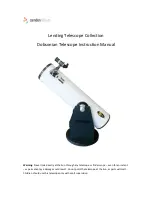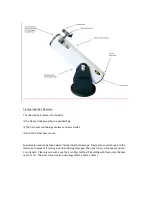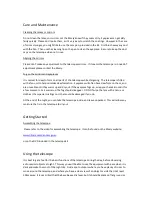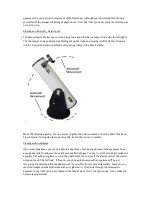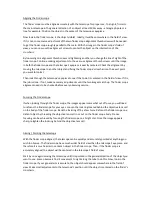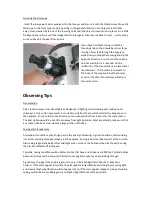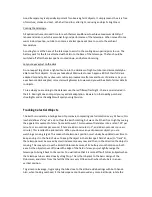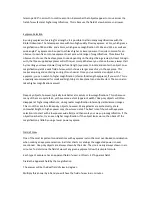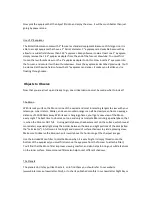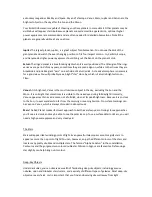
Focusing the telescope
Insert the low power 26mm eyepiece into the focuser and secure it with the thumbscrew. Move the
telescope so the front (open) end is pointing in the general direction of an object at least 250m
away. Now, slowly rotate one of the focusing nobs until the object comes into sharp focus. Go a little
bit beyond sharp focus until the image starts to blur again, then reserve back to focus – just to make
sure you have hit the exact focus point.
If you have trouble focusing, rotate the
focusing knob so the drawtube is in as far as
it will go. Now look through the eyepiece
while slowly rotating the focusing knob in the
opposite direction. You should soon see the
point at which focus is reached. On the
underside of the focuser there are two metal
thumbscrews. The thumbscrew closest to
the body of the scope will lock the focuser
position; the other thumbscrew will adjust
focuser tension.
Observing Tips
Site selection
Pick a location away from streetlights and bright yard lighting. Avoid viewing over rooftops and
chimneys, as they often have warm air currents rising from them, which distorts the image seen in
the eyepiece. You should also not observe out an open window from indoors for the same reason.
The best options would be out of town, away from light pollution. Most importantly, make sure that
any chosen site has a clear view of a large portion of the sky.
Seeing and Transparency
Atmospheric conditions play a huge part in the quality of viewing. In good conditions, star twinkling
is minimal and objects appear steady in the eyepiece. Seeing is best overhead, worst at the horizon.
Also seeing is generally better after midnight, when much of the heat absorbed by the Earth during
the day has radiated off into space.
Typically, seeing conditions will be better at sites that have an altitude over 3000 feet. Altitude helps
because it decreases the amount of distortion causing atmosphere you are looking through.
A good way to judge if the seeing is good or not is to look at bright stars about 40
◦
above the
horizon. If the stars appear to twinkle, the atmosphere is significantly distorting the incoming light,
and views at high magnification will not appear sharp. If the stars appear steady and do not twinkle,
seeing conditions are probably good, and higher magnifications will be possible.

